|
Chúng tôi khẳng định một chân lý hiển nhiên rằng mọi người sinh ra đều bình đẳng, rằng tạo hóa đã ban cho họ những quyền tất yếu và bất khả xâm phạm, trong đó có quyền sống, quyền được tự do và mưu cầu hạnh phúc . . . (Lời Mở Đầu Của Tuyên Ngôn Độc Lập Mỹ)
|
Though they were suppose to operate only in an advisory capacity, there were those situations that thrust some Ranger advisors to the forefront. On 4 April 1970, Sergeant First Class Gary L. Littrell found himself the only unwounded American Ranger advisor left after a surprise mortar barrage by the 28th North Vietnamese Regiment struck the 23rd ARVN Ranger Battalion in their defensive positions on top of Hill 763 in Kontum Province. An attempted helicopter extraction of the wounded Americans by Littrell failed as the helicopters could not penetrate the small arms fire to land near the Ranger NCO, who was standing in the open, exposed, holding a strobe light. Securing the wounded, Littrell proceeded to direct close air support throughout the night and into the next morning.
The light of dawn was met with another heavy mortar barrage against the besieged RVN battalion. Littrell moved about the perimeter administering first aid, directing fires, and moving casualties. A resupply helicopter was able to make it into the LZ around 1000. Littrell loaded the three wounded American Ranger advisors on board along with some ARVN Rangers as another American Ranger, Specialist 5 Raymond Dieterle, disembarked from the helicopter with ammunition.
For the remainder of the day, the two Ranger advisors moved about the perimeter, calling in air strikes, adjusting artillery strikes, and encouraging their South Vietnamese Ranger compatriots. The pressure against the perimeter grew along with the night. Sapper probes were driven back by indirect, aerial, and small arms fire.
The morning of 6 April opened with a North Vietnamese Army (NVA) attack that was repelled. Throughout that day, the NVA continued to rain heavy weapons and mortar fire down on the beleaguered force while the two American Rangers continued to make their rounds of the perimeter, shoring up the Vietnamese’s spirits. At 0630 the following morning, another firestorm of explosive volleys swept the hilltop. A massed assault staging in the woods was met by helicopter strikes directed by Littrell at the point of attack. Despite the air strikes, the human-wave attack a half hour later nearly breached the perimeter. Only a stoic defense by the fatigued defenders and the advisors’ bravery repelled the charge.
The Rangers were able to hold against a series of attacks that night. Finally, at 1030 on 8 April, the depleted and exhausted battalion was ordered to withdraw down the hill, through the jungle, across the Dak Poko River, to reach the 22nd ARVN Ranger Battalion. The two Ranger advisors set about organizing the movement, redistributing ammunition, and seeing that the dead and wounded were brought along.
The battalion moved out at 1100, under the command of the dazed ARVN battalion executive officer who proceeded to move down the wrong spur of the hill…despite the warning of the two American Rangers…and closer to the enemy position. At the bottom of the hill, the executive officer incredulously halted his formation for a five-minute tea break.
Immediately, the battalion was inundated with mortar fire. Littrell was able to establish radio contact with the 22nd ARVN Ranger Battalion and direct counter-fires against the enemy mortars. Requests for gunship support brought the word that none was immediately available, which prompted the battalion executive officer to panic and run. Seeing their commander flee, the remainder of the South Vietnamese Rangers began to scatter, leaving their dead and wounded behind.
With a “Come on, partner, let’s hat up,” Littrell grabbed Dieterle and slowly gathered up the dispersed Rangers. With the remnants of the battalion regrouped, the two Rangers proceeded to lead the formation through the jungle for several hours toward the proper objective. As the North Vietnamese pursued, the Rangers directed mortar fires “danger close” to keep the enemy at bay. During the repulse of one assault, Littrell and his partner were knocked to the ground by the force of 500-pound bombs the senior Ranger had called in nearby.
Directing the fight through two ambushes, the Americans continued to lead, cajole, and drag the ARVN soldiers along. At the last ambush site, Littrell stopped to assist three wounded Vietnamese Rangers. Carrying the most seriously wounded one on his back, Littrell ended up dragging the other two behind him and across the Dak Poko River as they held on to his web gear and were led to safety by Littrell with the remainder of the battalion.
Total losses for the ARVN Ranger Battalion were 218 casualties and nineteen MIA. For conduct above and beyond the call of duty, Sergeant First Class Gary L. Littrell was awarded the Medal of Honor.
By the end of United States involvement in Vietnam in 1973, Companies A and B of the 75th Infantry Regiment were the only two active duty Ranger/LRRP companies still in existence.
“There was only one MIKE Force battalion activated as it was, by COMUS MACV [Commander U.S. MACV] letter order,” said retired Brigadier General Stringham. “The order was sent from 5th Group that directed C-3 to form one reaction force battalion.”19 Time was critical. A-302 was given less than two weeks to train the new unit. Filling the ranks with new recruits, issuing equipment, and training had to be accomplished by 22 June 1965. After that date, the battalion was to be on call to respond to emergencies in the hotly disputed III CTZ
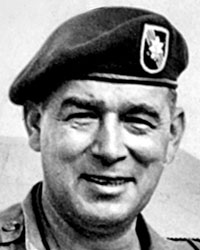
“The unit was named the MIKE Force. This came from LTC Miguel ‘Mike’ de la Peña. ‘Mike’ was his code name,” said Stringham.20 The MIKE Force was composed of three 150-man companies. With 348 Company as the nucleus, A-302 recruited Nungs to fill the ranks of the other companies. Nungs were also hired to form the reconnaissance platoon.21 There were no Vietnamese CIDG or Special Forces in the first MIKE Force. The strong family ties among the Nungs made the recruitment easy and virtually eliminated the security problems.
“Nepotism was the name of the game,” said Stringham. “Most of the older Nungs were ex-French Foreign Legion [French Colonial Army] guys and they would vouch for the younger ones. It was kind of a ‘self-vetting process,’ but we didn’t have a lot of time.”22 New recruits were given a cursory physical by the A-302 team medics to check for diseases and fitness. The troops were issued one set of tiger-stripe fatigues and M-2 carbines. Each company weapons platoon had three M-1919A1 .30 caliber machine guns and three 60 mm mortars.23 For communications, they were issued PRC-25 radios. The equipment for the MIKE Force came from the 5th SFG logistics base at Nha Trang. Being on the MIKE Force was economically advantageous for the troops. MIKE Force Nungs were paid considerably more than their CIDG counterparts. Each man received 6600 piastres ($55.00) per month as opposed to the 1500 p ($12.00) that was the CIDG monthly wage.24
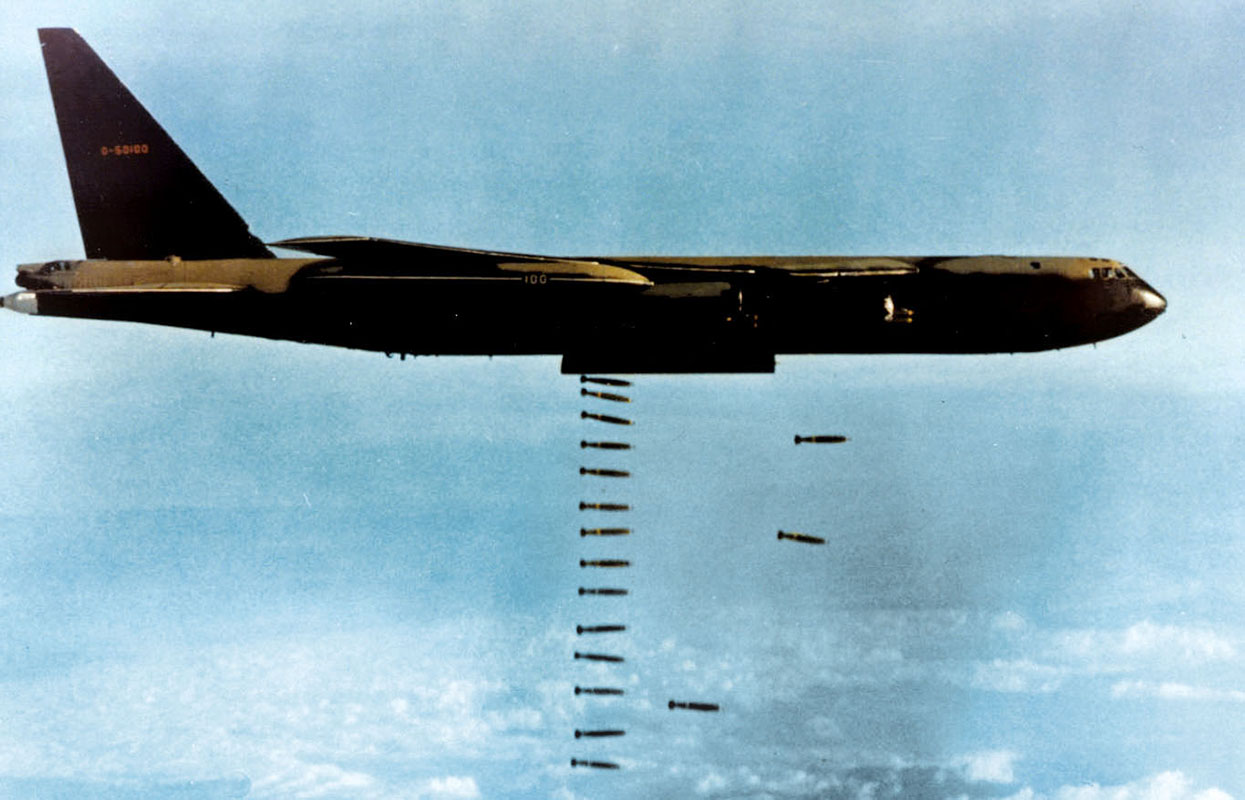
“I was the battalion commander,” said Stringham. “Two NCOs [non-commissioned officers] worked with each company. The guys lived with their companies.”25 A-302 focused on marksmanship and infantry small-unit tactics to get the MIKE Force operational. That test came on 22 June 1965.
“The first mission was to take three 6-man teams by helicopter into an area between Highway 13 and the Michelin Rubber Plantation to do a [bomb damage] assessment after a B-52 strike,” recalls Stringham. “The B-52s came out of Guam, but due to a mid-air collision during refueling, they missed the target. All they did was knock down enough stuff to make it hard to move through. We got inserted, ran around a while and got picked up. Not a great beginning for the MIKE Force.”26 The real combat evaluation came a month later.
On 19 July 1965, orders came from the C detachment to prepare a MIKE Force company to aid the SF team at the CIDG camp at Bu Ghia Map under attack by two VC battalions. The Mike Force mission was to evacuate the SF team and their CIDG strikers. 348 Company, the new 4th Nung company and the recon platoon were trucked to Tan Son Nhut Airbase to load two C-123 aircraft for the flight that night to Bu Ghia Map near the Cambodian border.27
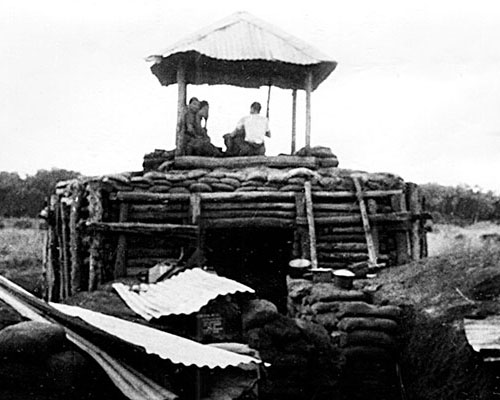
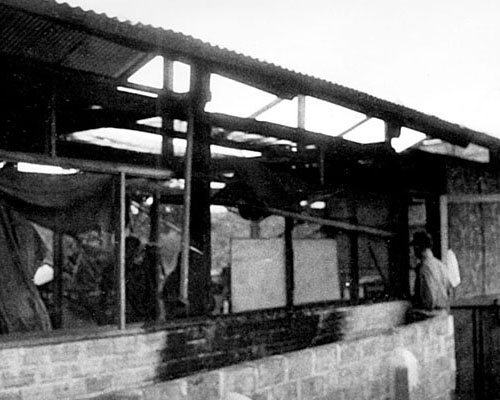
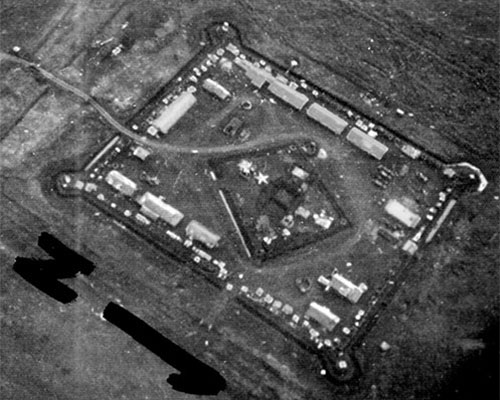
“We went in very light, no rucksacks or food. We landed and it was very dark,” said Stringham. “ I ran off the plane and straight into a ditch. When we got into the camp, I put my people on the perimeter, and got theirs [the camp occupants] off the wall, since they were likely compromised. There was half an A detachment and a handful of strikers there.”28 There was little contact the rest of the night. The arrival of the MIKE Force had prompted the VC to switch their main attack to the nearby Bu Dop camp. In the early morning the C Team ordered Bu Ghia Map abandoned and the MIKE Force to move to reinforce Bu Dop.
At daylight on 20 July, the C-123s began to arrive to evacuate the CIDG, the MIKE Force and their SF advisors. Stringham’s team placed explosive charges throughout the camp, on a five-minute delay. After the MIKE Force was flown out to Song Be, CPT Stringham and two NCOs, SSG William Parnell and SSG Elliot Wilson, were to detonate the charges.29 A helicopter picked up the three Americans, just before the explosives went off. Bu Dop had been hit hard the previous night. Two SF advisors and twenty CIDG strikers had been killed.30
